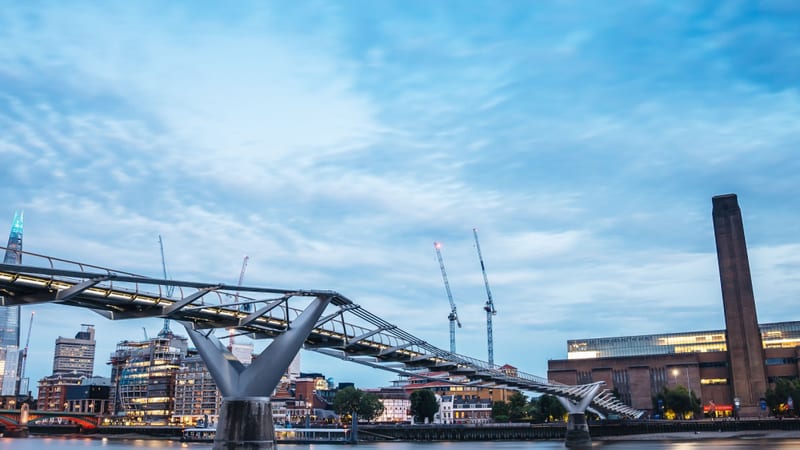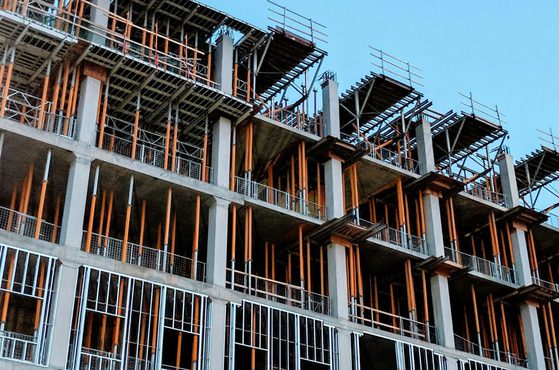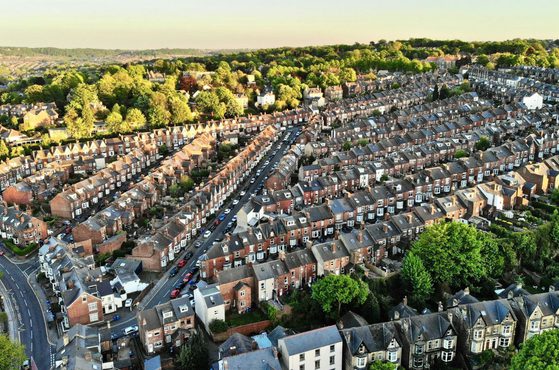In this article, solicitor and property litigation expert Oskar Musial examines the Supreme Court’s landmark decision in Fearn v Tate Gallery, its impact on the law of private nuisance and future urban developments, and what landowners and developers should bear in mind going forward.
While an Englishman’s home may well be his castle, he cannot use his castle in a completely unrestricted way. This is because common law intervenes to recognise that the Englishman next door needs to be able to enjoy his castle too. In particular, the tort of private nuisance restricts completely unfettered use of land by giving an aggrieved landowner, who suffers unlawful interference with the use or enjoyment of their land by the hands of an offending neighbour, a right to sue that neighbour.
Most recently, the Supreme Court tested the limits of private nuisance in the much-publicised decision of Fearn v Tate Gallery. Residents of a tower block opposite the Tate Modern complained of being under near-constant observation by members of the public who visited Tate Modern’s panoramic viewing gallery.
In a judgment handed down on 1 February 2023, the Supreme Court ruled in favour of the residents, overturning the first instance and Court of Appeal decisions. This landmark case — the first in which claimants have been successful in a private nuisance claim for visual intrusion by a neighbour — has led to significant speculation and commentary about its impact on the scope of the tort of private nuisance and on the development of our ever-changing and dynamic urban environments.
“Like being on display in a zoo”
The construction of a residential tower block known as Neo Bankside completed in September 2012. It stood across the road from the Tate Modern art gallery on the southern bank of the Thames River in London. In 2016, Tate Modern completed an extension to its art gallery known as the Blavatnik Building. On the top floor of the Blavatnik was a viewing gallery which ran round the outside of the building and gave visitors a panoramic view of London.
The southern part of the viewing gallery ended up being only 30 or so metres away from the Neo Bankside, whose apartment walls were in turn constructed mainly of glass (designed to give the occupiers a wide and clear view of the capital). This resulted in visitors to the gallery having a close and extensive view inside the claimants’ apartments. The claimants (who were leaseholders of apartments on the 13th, 18th, 19th and 21st floors of Neo Bankside) found that a very significant number of the visitors actively looked into their homes. Some visitors went so far as to wave to the residents in the privacy of their homes and even take pictures which were posted to social media. As Lord Leggatt in the Supreme Court put it, the situation for the residents was “much like being on display in a zoo”.
After the residents complained to Tate Modern, some preventive measures were taken such as the installation of signs asking visitors to respect the privacy of the residents of Neo Bankside. These did little to stop the overlooking by visitors. In 2017, the claimants issued a claim against the Tate Modern in private nuisance and under section 6 of the Human Rights Act 1998, seeking an injunction requiring Tate Modern to close off the part of the viewing gallery from which the overlooking took place.
Private nuisance
As Mann J helpfully summarised at first instance, there are three kinds of private nuisance:
- nuisance by encroachment on a neighbour’s land
- nuisance by direct physical injury to a neighbour’s land
- nuisance by interference with a neighbour’s quiet enjoyment of his land.
However, the application of private nuisance is not absolute. There is a balance to be struck between the right of the occupier to do what they like on their own land and the right of their neighbour not to be interfered with (paraphrasing Lord Wright in the leading private nuisance case of Sedleigh-Denfield v O’Callaghan [1940] AC 880).
As such, the interference caused by a defendant to the claimant’s use or enjoyment of their land must be unreasonable. A number of factors enter this assessment, such as the nature of the locality in which the properties are located (as Thesiger LJ put it in Sturges v Bridgman (1879) 11 Ch.D. 852: “What would be a nuisance in Belgrave Square would not necessarily be so in Bermondsey”), the duration and frequency of the defendant’s interference and whether the claimant has exposed itself to an interference by using his land in a sensitive manner.
Living cheek by jowl — High Court
At first instance, Mann J considered the planning history of both the Blavatnik and Neo Bankside, concluding that while both parties were aware of the plans for the viewing gallery, neither foresaw the severe degree of overlooking. On evidence and with the benefit of a site visit, Mann J considered that a homeowner would reasonably regard the degree of overlooking which took place as intrusive. In Mann J’s view, the overlooking in this case was capable in principle of constituting the third type of nuisance — interference with a neighbour’s quiet enjoyment of his land. However, he concluded that in operating the viewing gallery Tate Modern did not make an unreasonable use of its land. This conclusion was based on three main factors.
First, Mann J categorised the locality of the Blavatnik and Neo Bankside as being a mixture of residential, cultural and commercial use with a significant amount of tourist activity which was reflective of urban south London. He stated that “anyone who lives in an inner city can expect to live quite cheek by jowl with neighbours”. He considered this independently of local planning policies, which he described as irrelevant for the purpose of assessing the factor of locality in the context of a nuisance claim.
Secondly, Mann J concluded that the operation of a viewing gallery by Tate Modern was “obviously not unreasonable in the neighbourhood”. The present case was, in his view, unlike that of a noisy smoke-emitting foundry being operated in the middle of a non-industrial locale.
Thirdly, Mann J considered the nature and use of the claimants’ apartments and drew parallels with previous nuisance cases concerning sensitive users. He concluded that the claimants would have likely not had a complaint if they lived in apartments designed with more wall and less window and that both the developers and residents of the Neo Bankside had essentially submitted themselves to a degree of sensitivity to privacy due to the glassed design of the building. Most of the overlooking also extended to parts of the apartments known as ‘winter gardens’ which were conceived as indoor balconies but adopted by the claimants as living accommodation. As Mann J put it, “one does not expect so much privacy in a balcony”. He considered that self-help measures, such as the installation of solar blinds, privacy film and net curtains, were available to the claimants.
Accordingly, Mann J dismissed the claimants’ claim.
No ‘overlooking’ in private nuisance — Court of Appeal
The appeal to the Court of Appeal went even less favourably for the claimants. The Court of Appeal concluded that the act of overlooking was not even capable of constituting a nuisance. At best, the Court went on, existing authorities support the act of “watching and besetting” as constituting a nuisance (referring to a 1995 decision of the Supreme Court of New South Wales in which a defendant installed floodlights and camera equipment on his property with the sole purpose of illuminating and recording the plaintiff’s adjoining backyard).
The Court of Appeal found no reported case in England and Wales in which a claimant had been successful in nuisance for overlooking by a neighbour. The Court commented on this absence (borrowing Mann J’s phraseology) by stating that “familiar images of cheek-by-jowl buildings in cities such as London in the medieval and early modern period show that overlooking was commonplace and indeed inevitable when the great cities were being constructed”.
According to the Court of Appeal, there were also good policy reasons for restricting overlooking from the scope of private nuisance. It was difficult firstly to envisage any clear legal guidance as to where the line would be drawn in such cases. The planning system was more suited as the means of protecting residents from overlooking. In any event, the Court considered it a job of Parliament to legislate in respect of unacceptable cases of overlooking and not its job to extend the law of private nuisance.
Interestingly and perhaps with a view of things to come, the Court stated that if, contrary to its decision, private nuisance extended to overlooking, then liability would have been established following a finding that the use of the viewing gallery caused material damage to the amenity value of the claimants’ apartments. According to the Court of Appeal, there was no suggestion that the claimants used their apartments as anything other than ordinary homes. As such, Mann J’s analysis of reasonable use as between the claimants and Tate Modern was, according to the Court of Appeal, contrary to the general principles of private nuisance.
Was the use of the Blavatnik “common and ordinary”? — Supreme Court
By the time the case reached the Supreme Court, the odds seemed stacked against the claimants. However, by a majority of three to two, the Supreme Court ruled in their favour. The leading majority judgment was given by Lord Leggatt who took on the task of “recalling the relevant core principles of the common law of private nuisance”, “showing how they apply to the facts of the case” and explaining how “each of the courts below misapplied those principles”.
Lord Leggatt’s first conclusion was that there exists no conceptual limit to what can constitute a nuisance. The framing of the nuisance in this case as “overlooking” was also incorrect. What the claimants complained of, in Lord Leggatt’s view, was an intolerable degree of “visual intrusion” and it was not difficult to imagine circumstances in which an ordinary person would find the type and degree of visual intrusion experienced by the claimants to be an intolerable interference with the use and enjoyment of their properties. Lord Leggatt then reminded us that to give rise to liability in private nuisance, an interference must be unreasonable. According to Lord Leggatt, this assessment follows two main questions.
Firstly, has the defendant’s use of land caused a substantial interference with the ordinary use of the claimant’s land? Substantial interference is to be judged by the standards of an ordinary or average person in the claimant’s position. Ordinary use is to be judged by reference to the locality of the land in question so that, for example, where a locality is devoted to a particular trade, that trade carried on in that locality is not a private nuisance. It is then no defence to a claim of nuisance that the defendant was already using its land in the way complained of, or that the defendant’s activity carries a public benefit.
Secondly, even if the defendant’s activity substantially interferes with the ordinary use and enjoyment of the claimant’s land, is the defendant’s activity itself no more than a common and ordinary use of the defendant’s own land? It is no defence for a defendant to say that the use of its land was reasonable (as was Mann J’s conclusion in the High Court). Here, Lord Leggatt illustrated the point with the case of Southwark London Borough Council v Tanner [2001] 1 AC 1 in which adjoining apartments were built without sound insulation meaning that neighbours could hear each other distinctly as they went about their lives (watching TV, cooking and cleaning, and their general coming and going). While noise produced by one neighbour constituted a substantial interference with the ordinary use and enjoyment of another neighbour’s apartment, this interference was a result of the neighbours doing no more than making ordinary use of their own apartments.
Applying these two questions, Lord Leggatt concluded that the present claim ought to succeed. Firstly, there was no doubt that the visual intrusion complained of by the claimants constituted a substantial interference with the ordinary use and enjoyment of their apartments. Secondly, the use of the viewing platform by Tate Modern was not an ordinary use of its land. It was the only viewing platform in that locality and its use was not in any way incidental to the use of Tate Modern’s land as an art gallery. As Lord Leggatt put it:
“Inviting several hundred thousand visitors a year to look out at the view from your building cannot by any stretch of the imagination be regarded as a common or ordinary use of land.”
Any sensitivity of the claimants’ apartments and the availability of protective measures was then irrelevant.
The Supreme Court then left the question of the remedy for a future determination by the High Court (absent an agreement between the parties). Lord Leggatt suggested that public interest, remedial measures available to Tate Modern, the scope of any injunction and the possibility of quantifying damages may constitute the relevant factors in this determination. For his own part, Mann J commented at first instance that had he been minded to grant an injunction, he would not have extended it beyond the southern section of the gallery.
Reflections on the likely impact on developers and landowners
The decision of the Supreme Court has been met with an animated response. Some have decried its implication for the future development of cities and urban environments, categorising it as a vindication of the stifling ‘not in my backyard’ attitude. Others have pointed to the extremely unique circumstances of the case which are unlikely to be replicated again and certainly not on a wide scale.
So, must developers now add a potential flurry of private nuisance cases on top of the pile of concerns and contingencies when planning urban projects? Are landowners now able to more effectively protect their privacy?
Lord Leggatt certainly did not view his decision as a controversial one. To him, and the majority in the Supreme Court, the decision flowed from an application of existing principles of private nuisance. Lord Leggatt was quick to point out that cases in which land is used in such an unusual way as Tate Modern’s are likely to be rare (albeit, likely to be exacerbated by technology). The same optimism was not shared by Lord Sales who, along with Lord Kitchin, gave the dissenting judgment in the Supreme Court.
The central factor in Lord Leggatt’s judgment was his finding that Tate Modern’s use of the viewing platform was not a “common and ordinary” use of its land. However, for Lord Sales, the fundamental principle of private nuisance remains the wider assessment of “reasonable user”, which involves striking a fair balance between neighbours judged in the context of the character of the particular locality. If a defendant uses its land in a way which is not “common and ordinary”, that use only forms part of the wider assessment.
The “reasonable user” assessment does require an examination of factors such as available self-help measures and the sensitivity of the claimants (in this case, of the open and glassed design of the Neo Bankside, which was unusual for the locality). In Lord Sales’ view, the undue focus on whether the defendant’s use of its land is “common and ordinary” risks localities becoming trapped in time and undermines the general policy of common law to favour the freedom of landowners to use their land as they wish. It also gives excessive power to neighbours to block developments and frustrate new uses of land. In Lord Sales’ conclusion, Mann J’s decision in the High Court could not be faulted.
Key takeaways
It remains to be seen what comes of Lord Sales’ concerns. For the time being, developers and landowners might note a few learning points from the Fearn v Tate Modern saga:
- A proper consideration of the prospect of intolerable visual intrusion at the planning stage (which Mann J explained was absent by all parties in this case) could have forestalled the claim altogether.
- The prospect of private nuisance claims and the injunctions that may be obtained to prevent certain land uses and developments must be woven into the risk assessment by developers early on in the process, especially when it comes to novel uses of land which could be considered not to be “common and ordinary”. As the Supreme Court ruled, there is no conceptual limit to what can constitute nuisance.
- Landowners whose land suffers from an unreasonable interference to privacy need to be mindful of the extremely unique facts of this case. A finding of liability will also not necessarily lead to an injunction, so preventive measures or a negotiated solution with a neighbouring landowner to secure privacy may be a more financially viable option.
Whether you are using, buying or selling property, our dedicated property team has the specialist knowledge and experience to support you through every stage of the legal process. Get in touch with me at oskar.musial@brabners.com or our wider property and construction team to find out more.



